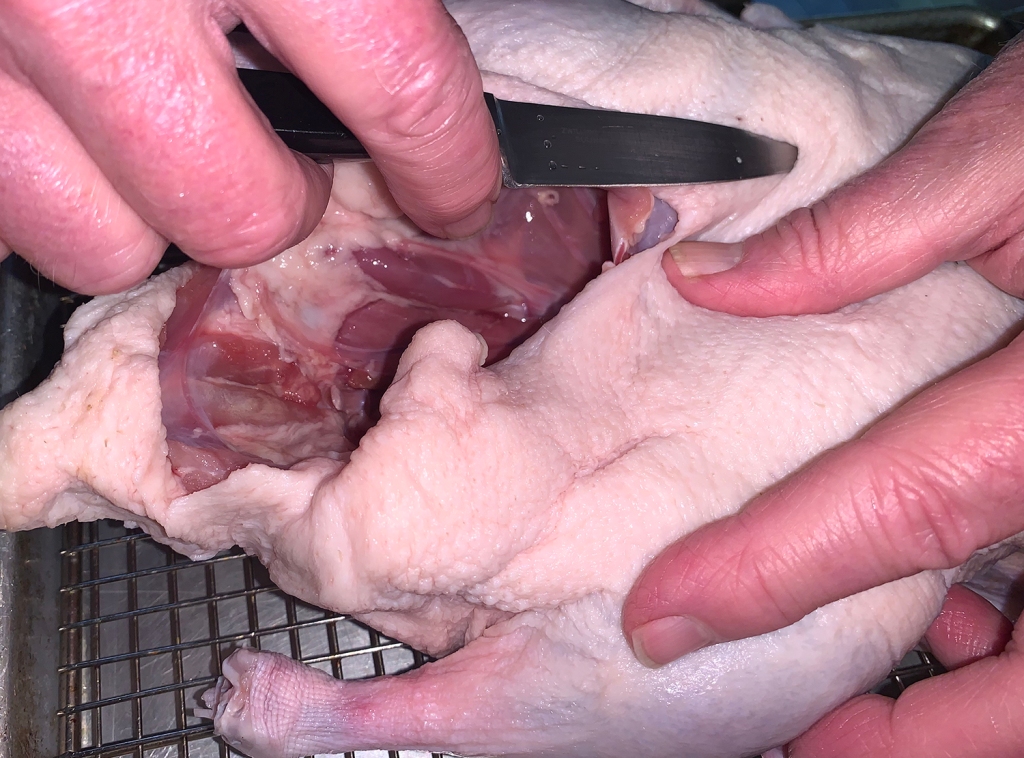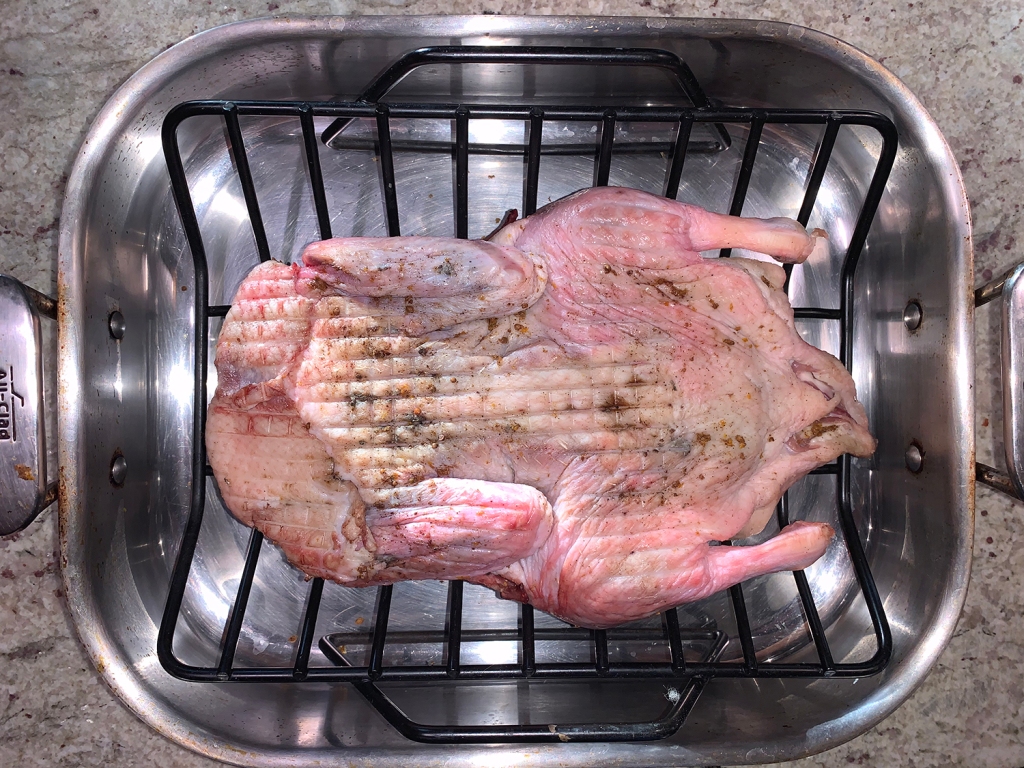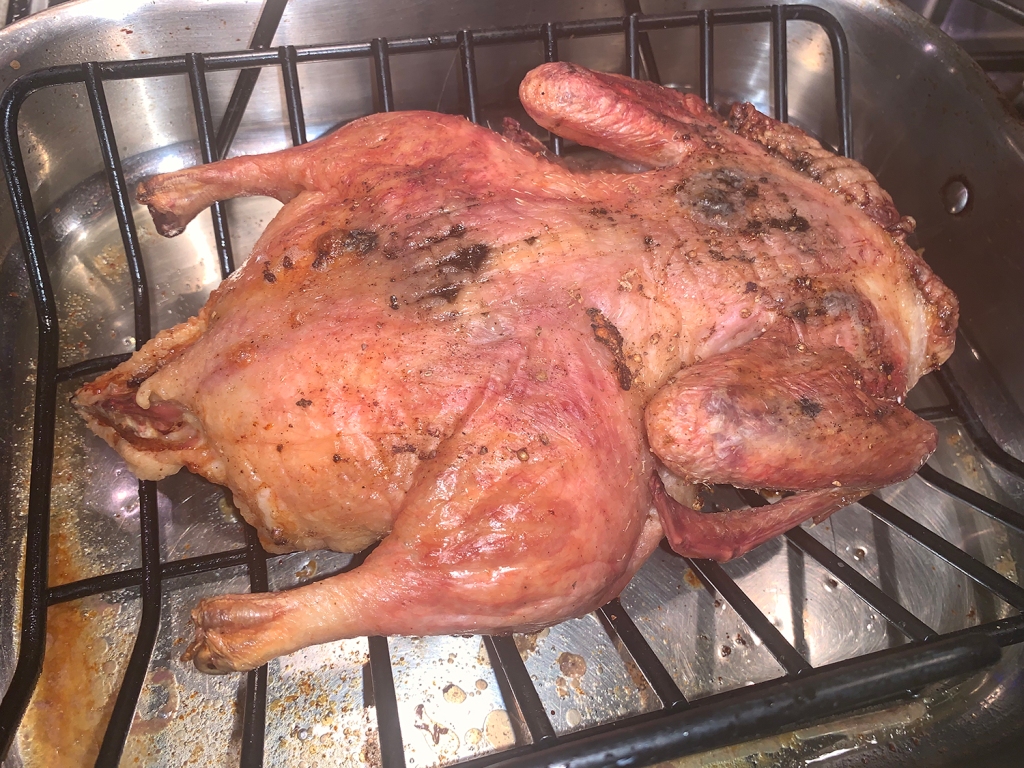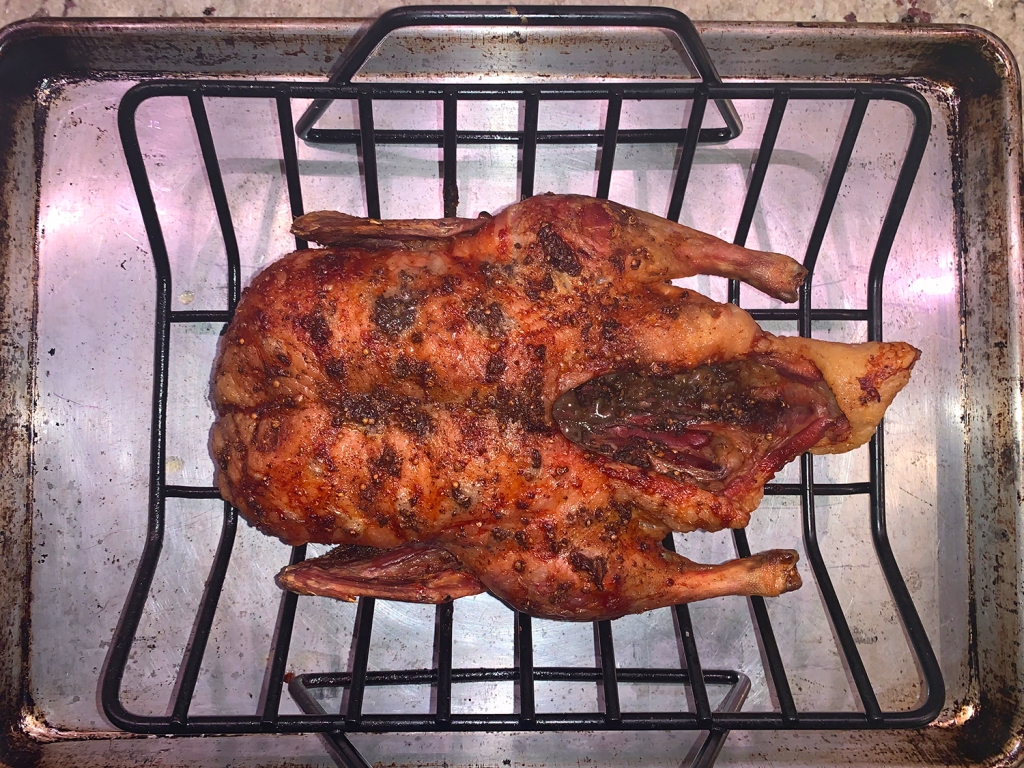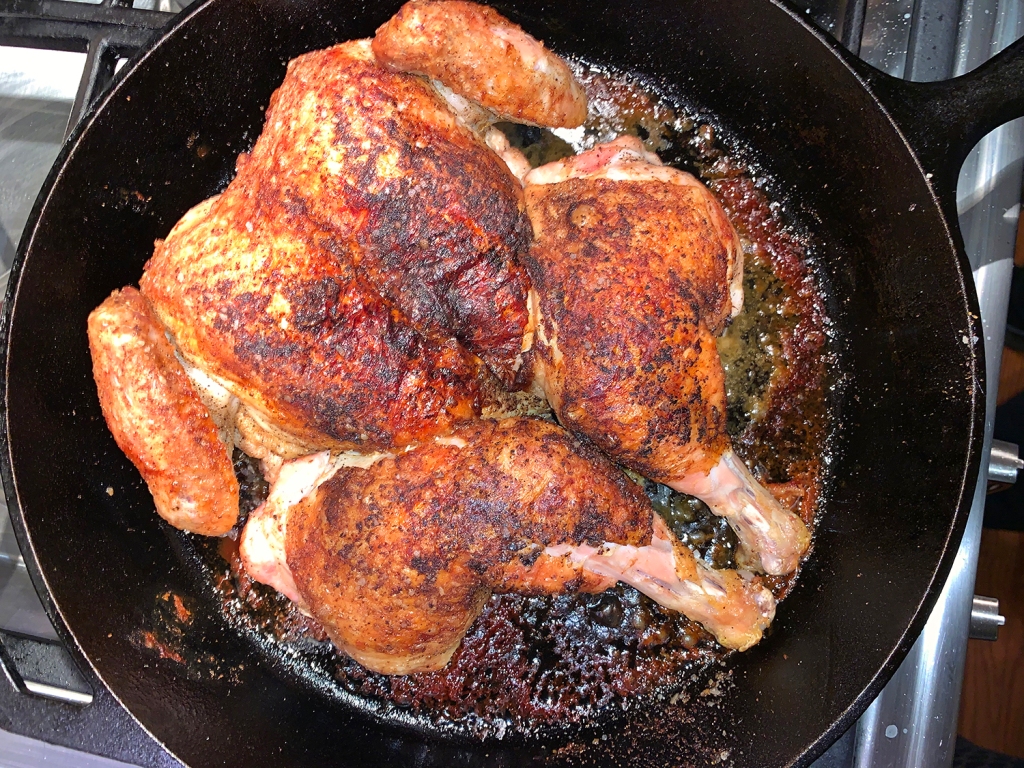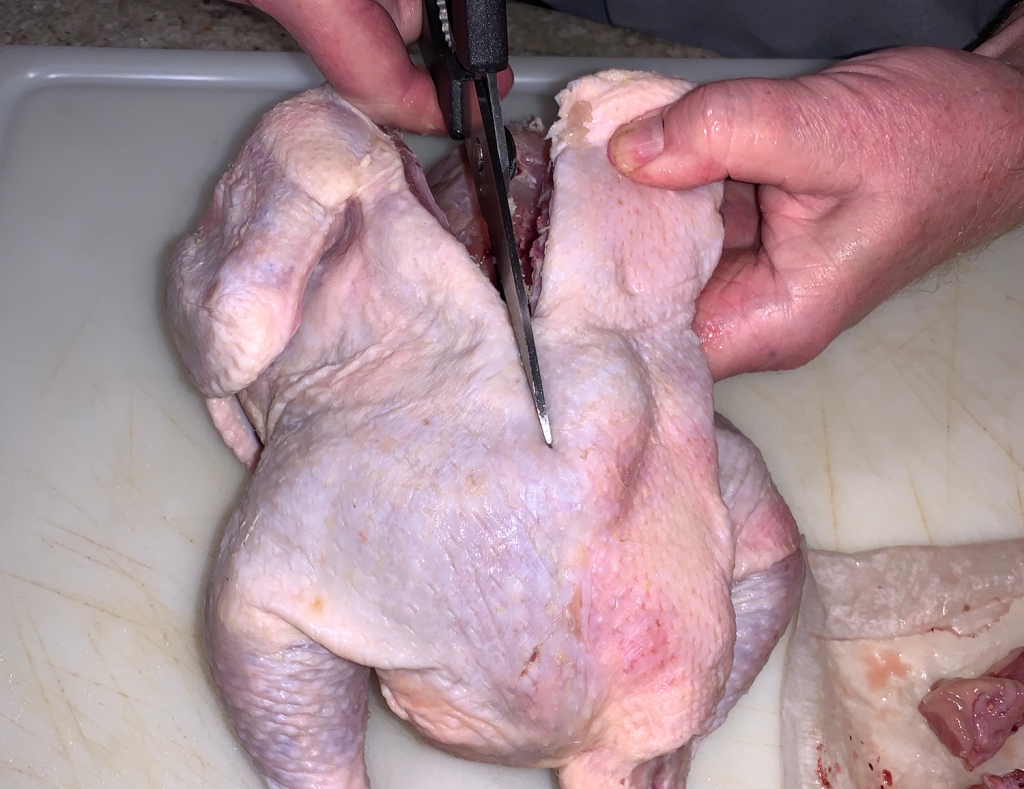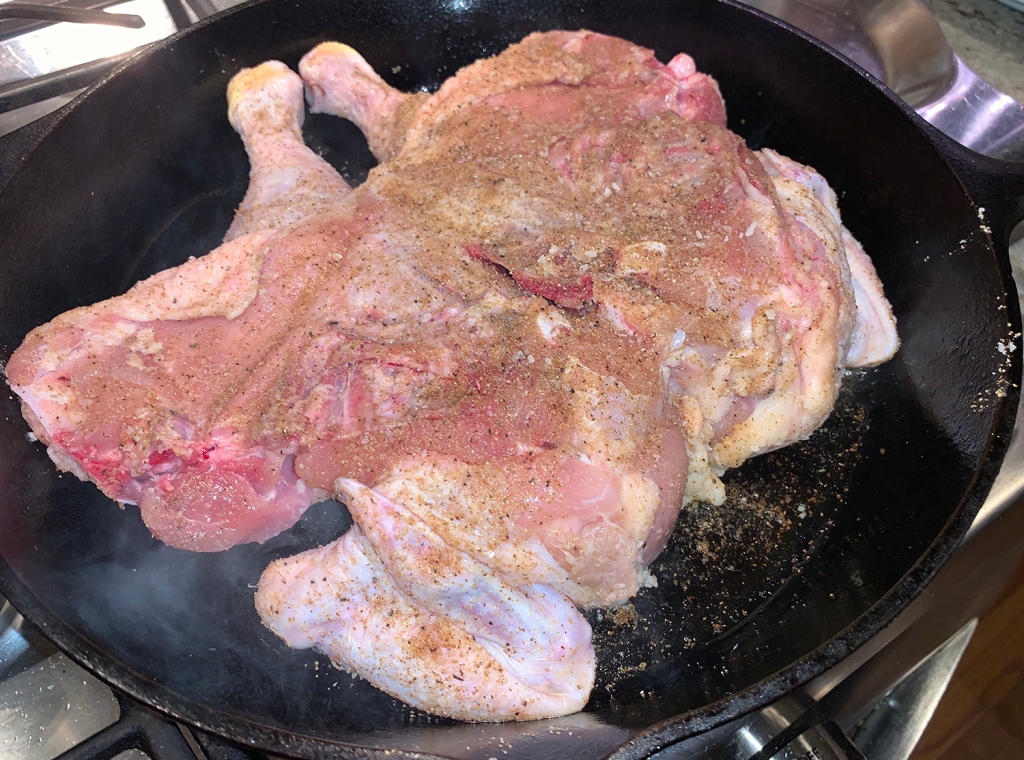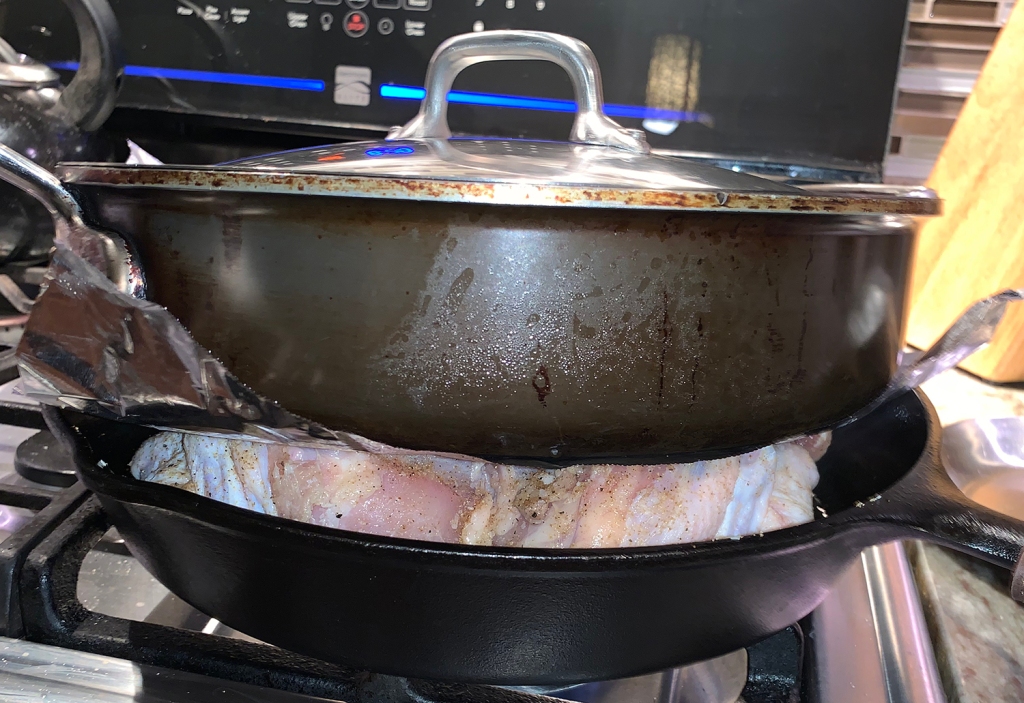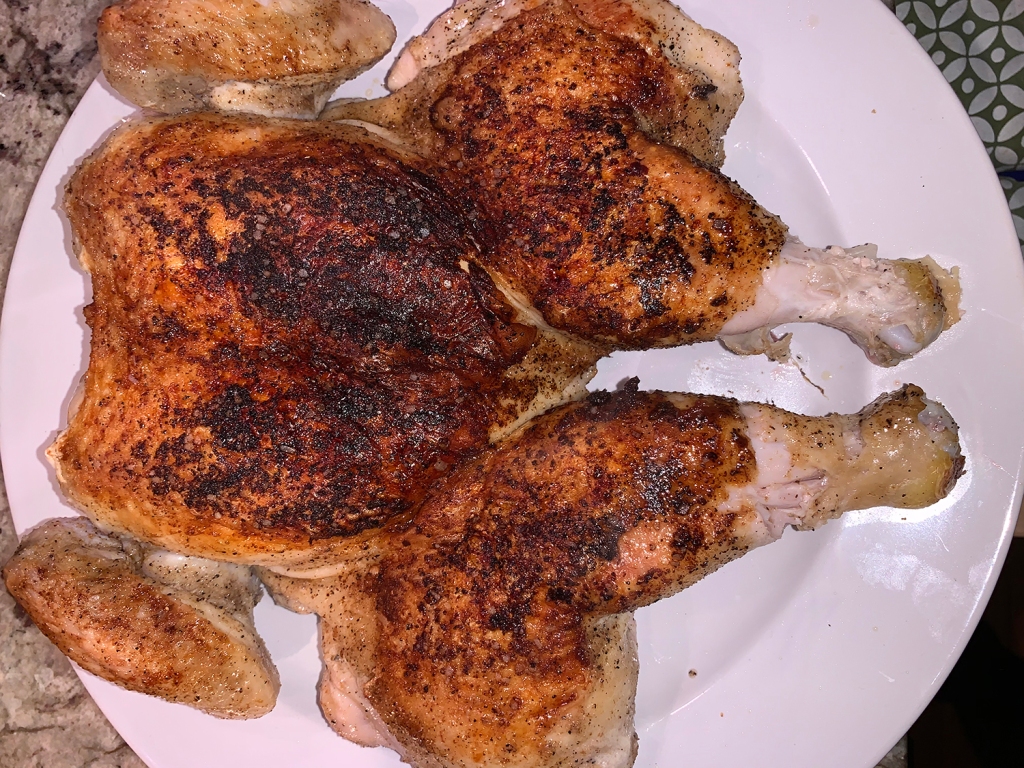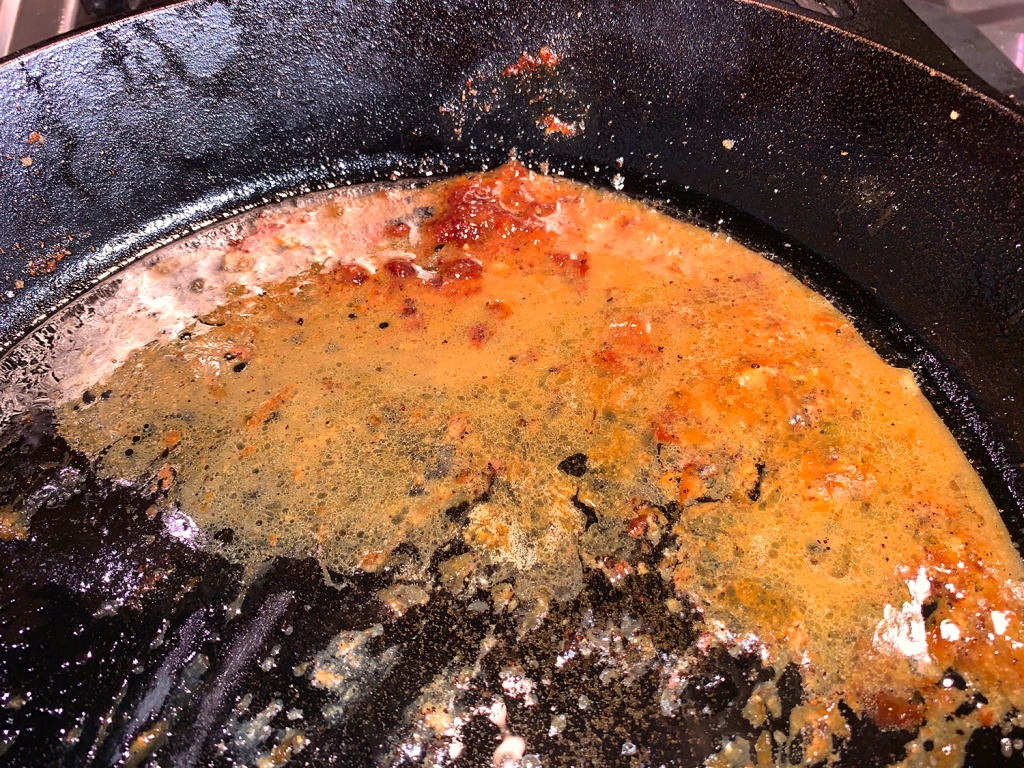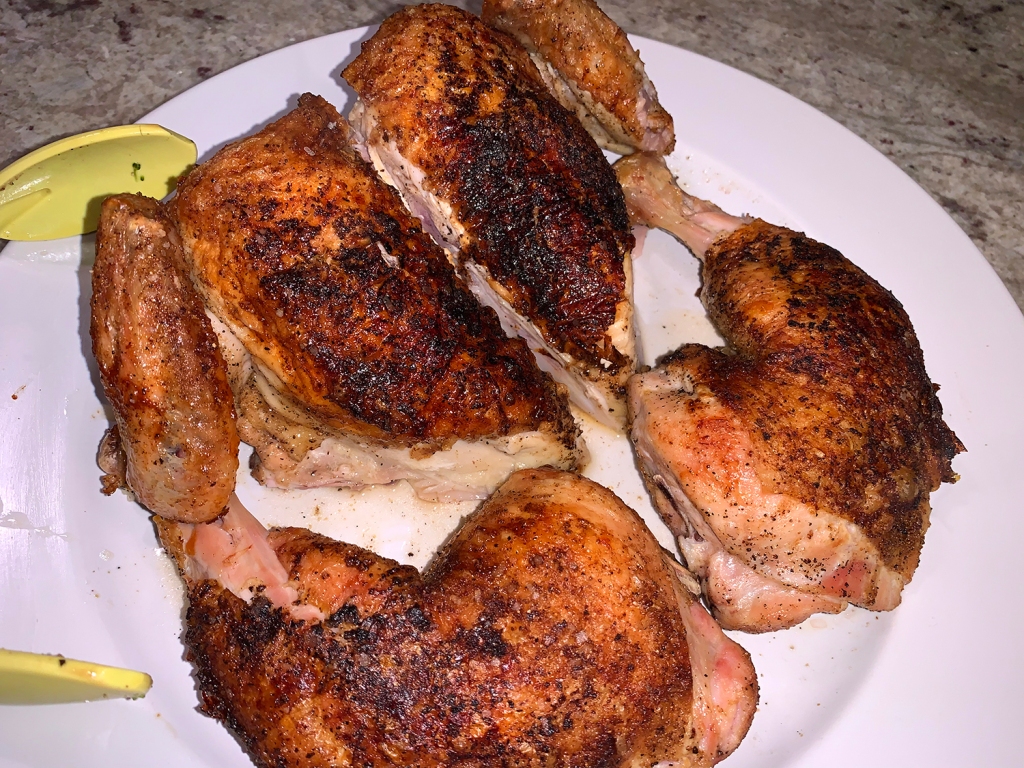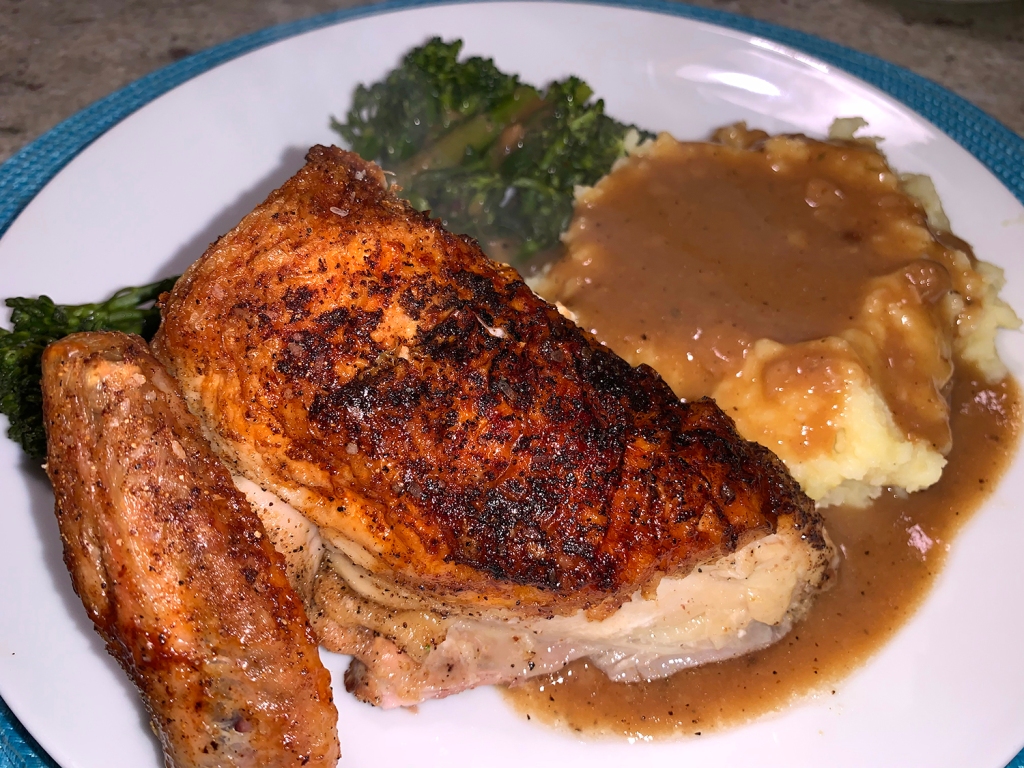We are not particularly lazy cooks in the kitchen, in fact, quite the opposite. But the Molly Stevens Whole Roast Duck with Hoisin Sauce recipe—also dubbed Lazy Person’s Peking Duck—from her All About Roasting cookbook, caught our eye because of that description. We’ve had a duck in the auxiliary freezer for a few months and our mouths were watering for a super-crispy skinned duck feast.
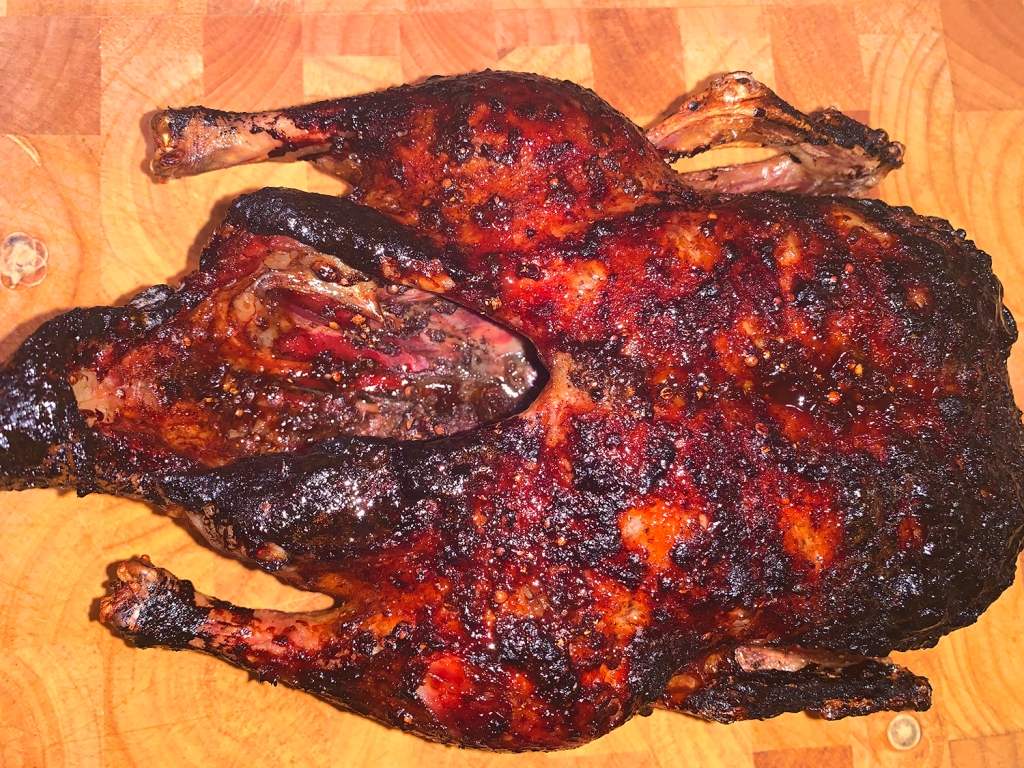
Typically, authentic Peking duck requires a lengthy preparation process. In order to replicate that without putting yourself through the wringer, Molly recreated this version with crackly, crisp skin and the sweet Asian accent of hoisin sauce. However, keep in mind, the seasoned duck will need 24 to 48 hours in the refrigerator (so you’ll have plenty of time to be lazy whilst it refrigerates). Well, our duck marinated nearly 54 hours because we had to push the meal off by a day.
The duck slow roasts to render its fat, but prodigious pricking of the skin with a sharp knife also helps release the fat as it melts. Growing up, Mom cooked duck for Sunday supper a few times per year, and I distinctly remember her pricking the duck skin often—I couldn’t wait to enjoy the succulent meat and crispy skin! And that anticipation hasn’t waned a bit all these decades later.
Once done, the meat will almost be falling off the bone, and it will be moist and tender thanks to the natural basting from the bird’s own fat. It’s wise to keep an empty can nearby as you remove the excess fat over the course of the roasting process.
The recipe calls for a 5-6 pound duck to feed four. Ours was much smaller than that at only 3 1⁄2 pounds, yielding about 2 1⁄2 servings. Keep size in mind when planning dinner.
Whole Roast Duck with Hoisin Sauce
Ingredients
For the Spice Rub and Duck
- 1 Tbsp. kosher salt
- 2 garlic cloves, minced
- 2 tsp. finely grated orange zest
- 1 1⁄4 tsp. coriander seed, lightly toasted
- 1 1⁄4 tsp. Chinese five-spice powder
- 1⁄2 tsp. ground white pepper
- 1 Pekin (Long Island) duck, 5-6 lbs., giblets removed
For the Glaze
- 3 Tbsp. Hoisin sauce
- 2 Tbsp. orange liqueur, such as Triple Sec or Grand Marnier
- 1 Tbsp. honey
- 1 tsp. sesame oil
Directions
- Trim and season the duck: In a mortar or spice grinder, grind the salt, garlic, zest, coriander seeds, five-spice powder, and pepper into a coarse paste.
- Make 20 to 30 small slits in the duck skin, using a sharp paring knife held parallel to the surface so that you pierce the skin and fat without cutting into the meat. Be sure to make slits on the back and thighs as well as the breast. Rub about two thirds of the spice mixture into the duck cavity and then rub what remains all over the skin. Set the duck on a rack set over a baking sheet and allow to air-dry in the refrigerator for at least 24 hours and up to 48 hours.
- Heat the oven: Position a rack in the center of the oven and heat to 325 degrees F (300 degrees F convection). Let the duck sit at room temperature as the oven heats.
- Roast the duck: Arrange the duck breast down on a roasting rack in a roasting pan (about 12 by 14 inches) and roast for 1¼ hours. Remove the pan from the oven and spoon or pour off most of the fat. (A turkey baster can make this job easier.) Using sturdy tongs inserted in the duck’s cavity, flip the duck over. Pierce the skin again all over the breast and legs with a knife. Return the duck to the oven to continue roasting until the meat around the thighs feels tender when prodded (a skewer should penetrate the thigh with no resistance), the legs feel loose in their joints, and an instant-read thermometer inserted into the thickest part of the thigh (without touching bone) registers 175 degrees F, another 1 to 1¼ hours. (You can roast the duck a day ahead to this point.)
- Glaze and blast the duck: Remove the duck from the oven and increase the oven temperature, preferably to 500 degrees F convection, if you have it, or to 525 degrees F standard. In a small bowl, whisk together the hoisin sauce, orange liqueur, honey, and sesame oil. Carefully transfer the duck (on the roasting rack) to a rimmed baking sheet. Paint the breast and legs with about half the glaze and return the duck to the hot oven. Paint again after 5 minutes, and continue roasting until crispy and mahogany-colored, about 3 minutes in a convection oven, 5 minutes in a standard oven.
- Let rest and carve: Transfer the duck to a carving board, ideally one with a trough, and let it rest for 5 to 10 minutes before carving. Carving a duck is much like carving a small version of a goose. Be sure each person gets both breast meat and a thigh or leg.
- You can use the pre-seasoning and slow roasting method from the Whole Roast Duck with Hoisin Sauce recipe with just about any flavors you like, including just simple salt and pepper. Just be sure to use at least 1 tablespoon of salt per bird in the pre-salting step. Follow the trimming and roasting instructions (steps 1-3). Omit the glaze, but do give the duck that final blast of heat to brown it beautifully.
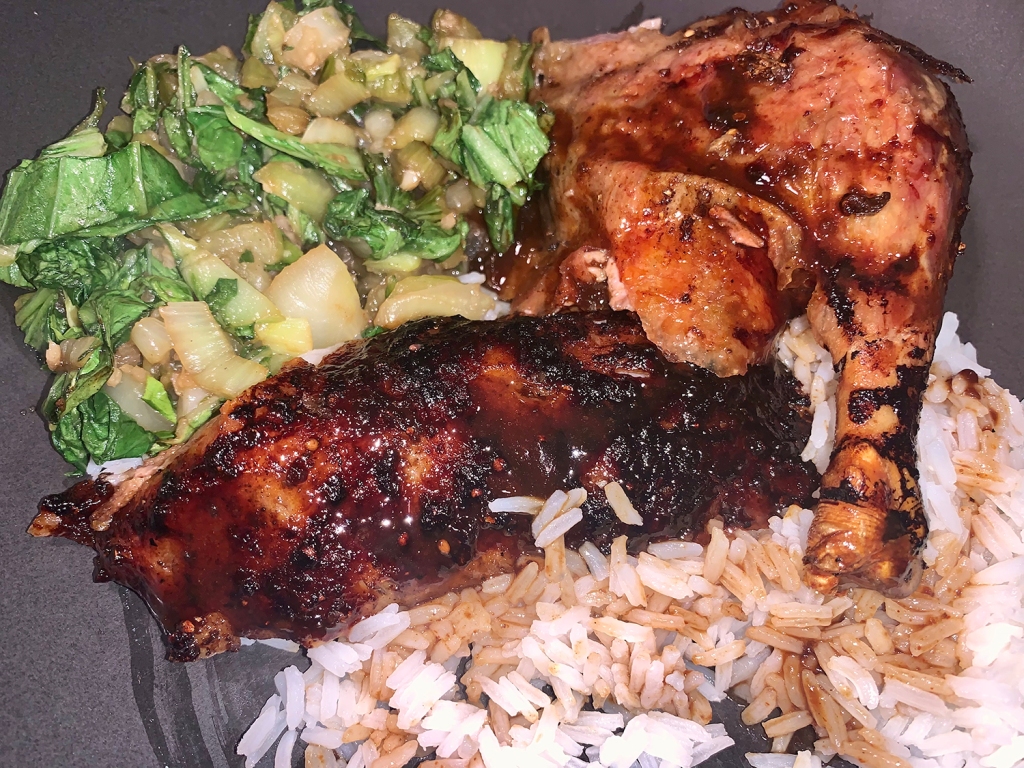
Recipe compliments of Molly Stevens from her All About Roasting cookbook



